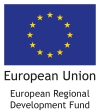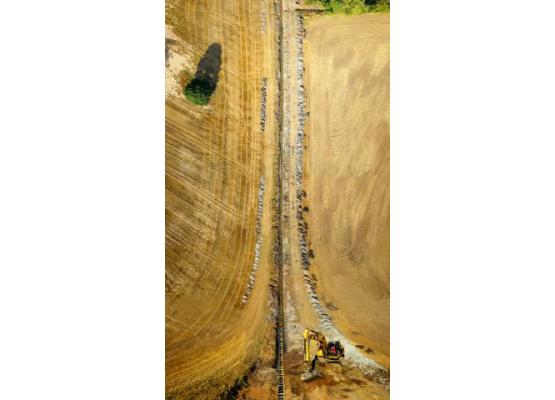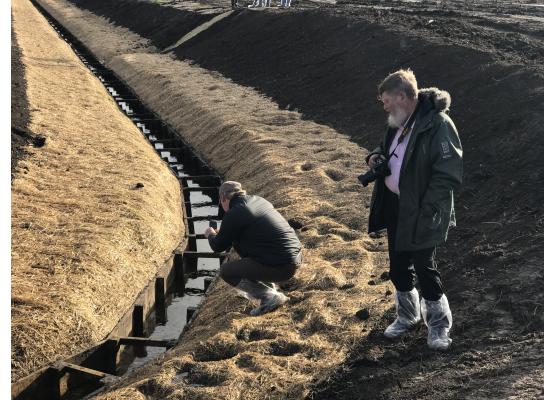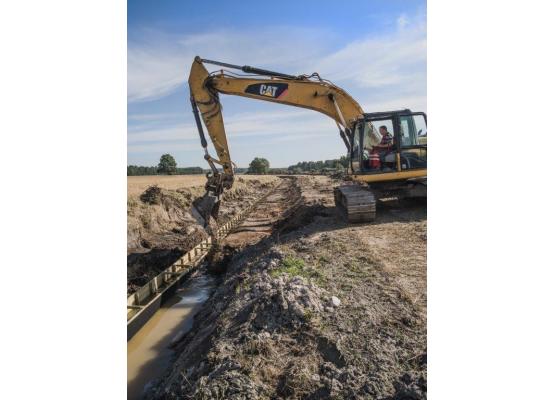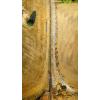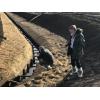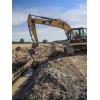P2 Sustainable use of common resources
2.4. Reduced nutrients, hazardous substances and toxins inflow into the Baltic Sea
Central Baltic
01.09.2015 - 28.02.2019
€1 763 962
€1 389 058
The project NUTRINFLOW aims at reducing nutrient losses from agriculture to the immediate watershed and into the Baltic Sea. The idea is to take practical actions for holistic drainage management for reduced nutrient inflow to the sea. This is done by implementing, demonstrating and increasing the recognition of innovative water management measures in agricultural areas.
The project activities focus on pilot areas in Finland, Latvia and Sweden under pressure by agricultural nutrient losses. The project implements targeted demonstration investments to the fields and to the drainage network in cooperation with municipalities and farmers as the main target groups. Through the investments, the project expects to reduce nutrient losses from agriculture in three priority regions.
As a result of the project, the nutrient inputs to the Baltic Sea is decreased whereas the attractiveness and feasibility of holistic water management approach for agricultural catchments across the Central Baltic Region is increased. All in all, the project connects local authorities and farmers in a unique way and demonstrates a cross-sector approach in sustainable agriculture and management of ecosystem resources. The project is the first full-scale project under the EU Strategy for the Baltic Sea Region flagship project “Flow Baltic” through which it will gain region-wide visibility.
ProAgria Etelä-Suomi ry
Country: FI
http://etela-suomi.proagria.fi/
Partner budget: 579.988 EUR
Amount of ERDF funding: 434.991 EUR ERDF
Zemgales Plānošanas reģions
Country: LV
Partner budget: 247.391 EUR
Amount of ERDF funding: 210.282 EUR ERDF
Zemnieku Saeima
Country: LV
Partner budget: 171.626 EUR
Amount of ERDF funding: 145.882 EUR ERDF
Latvijas Lauksaimniecības universitāte
Country: LV
Partner budget: 102.020 EUR
Amount of ERDF funding: 86.717 EUR ERDF
JTI – Institutet för jordbruks- och miljöteknik
Country: SE
Partner budget: 251.048 EUR
Amount of ERDF funding: 188.286 EUR ERDF
Länstyrelsen Östergötland
Country: SE
www.lansstyrelsen.se/ostergotland
Partner budget: 190.803 EUR
Amount of ERDF funding: 143.102 EUR ERDF
Loviisan kaupunki
Country: FI
Partner budget: 56.588 EUR
Amount of ERDF funding: 42.441 EUR ERDF
Nylands Svenska Lantbrukssällskap
Country: FI
Partner budget: 24.666 EUR
Amount of ERDF funding: 18.500 EUR ERDF
Jelgavas novada pašvaldība
Country: LV
Partner budget: 139.833 EUR
Amount of ERDF funding: 118.858 EUR ERDF
Vreta Kluster
Country: SE
Achieved results
NUTRINFLOW: Sustainable and approachable nutrient reduction
NUTRINFLOW reduced nutrient losses from agriculture to immediate watersheds and into the Baltic Sea. Reduction was achieved through pilot investments implemented in Finland, Sweden and Latvia, where various nutrient sources were targeted. Instead of the planned five nutrient sources, the project ended up choosing 11 sources. Actions included river channel restorations, building wetlands and flood plains, mounting or renovating culverts and improving subsurface drainage. Direct improvements from these actions were reduced nutrient losses in phosphorus and nitrogen.
Knowledge gained from the pilot sites serve as a reference for a holisitic drainage management, offering farmers and other stake-holder organisations important information on these issues. The project also increased general awareness among farmers, advisors and municipal authorities and services on drainage techniques and approaches to integrate field and basic drainage measures. Due to its high relevance, good implementation and re-usability of results, the project gained the Baltic Sea Strategy Flagship (Flow Baltic) status. The outcomes of the NUTRINFLOW will be further utilised by the Ministry of Agriculture to prepare suggestions on nutrient retention measures in agricultural drainage to be supported in Latvia during the next planning period of the Common Agricultural Policy (2021-2027).
Project website: nutrinflow.eu
• Reduced nutrients from agriculture to immediate water-sheds and into the Baltic Sea
• Five pilot sites with good experiences
• EUSBSR flagship project


